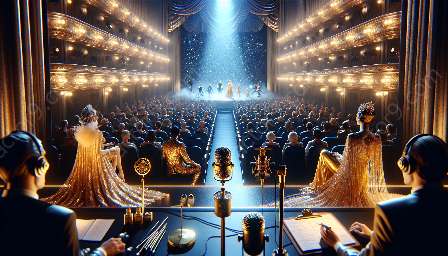Aspiring voice actors often overlook the close relationship between vocal projection training and character development. Understanding how these two elements are interconnected can significantly enhance a voice actor's performance. In the world of voice acting, characters are brought to life through the voice, and vocal projection training plays a crucial role in shaping the character's essence and delivery.
Vocal Projection Training: The Foundation for Authentic Character Expression
Vocal projection training is the process of developing the voice to reach its full potential in terms of volume, clarity, and expressiveness. It involves various techniques and exercises aimed at strengthening the vocal cords, improving breath support, and expanding the vocal range. These aspects are essential in creating distinct voices for different characters and ensuring that the voice reflects the emotional depth and nuances of each character.
When voice actors undergo vocal projection training, they learn to harness the power of their vocal instrument, enabling them to convey a character's emotions, personality, and traits effectively. Furthermore, vocal projection training empowers voice actors to project their voices with confidence, ensuring that their performances resonate with authenticity and captivate the audience.
Character Development: Embodying the Essence of the Character
Character development in voice acting goes beyond mere voice modulation. It encompasses understanding the nuances of a character's backstory, motivations, and emotions. By delving into a character's psyche, voice actors can breathe life into the character and make them resonate with the audience on a deeper level. Through character development, voice actors imbue their performances with authenticity, creating compelling and believable characters.
The Interplay Between Vocal Projection Training and Character Development
Vocal projection training and character development are intricately linked, working in tandem to enhance a voice actor's portrayal of characters. The ability to manipulate one's voice through vocal projection techniques allows voice actors to translate the essence of a character into vocal expressions. When equipped with vocal projection skills, voice actors can bring out the subtleties and complexities of a character's personality through vocal inflections, intonations, and tonal variations.
Furthermore, vocal projection training enables voice actors to embody characters with conviction and authority. By mastering vocal projection, voice actors can take on a wide range of characters, from heroic protagonists to villainous antagonists, and convey their individuality with finesse and precision.
Challenges and Transformative Opportunities
Engaging in vocal projection training and character development presents voice actors with both challenges and transformative opportunities. Through rigorous vocal exercises and character exploration, voice actors constantly refine their craft, honing their ability to adapt to diverse roles and bring depth to their performances. This process cultivates a deep understanding of vocal nuances and character dynamics, enabling voice actors to render multi-dimensional and lifelike portrayals.
Conclusion
The intersection of vocal projection training and character development in voice acting is a dynamic and symbiotic relationship. Voice actors who recognize the synergy between the two and invest in honing both aspects of their craft stand to distinguish themselves as versatile and captivating performers. By mastering vocal projection and delving into character development, voice actors can breathe life into an array of characters, leaving a lasting impact on the audience and enriching the storytelling experience through their compelling and authentic portrayals.




























